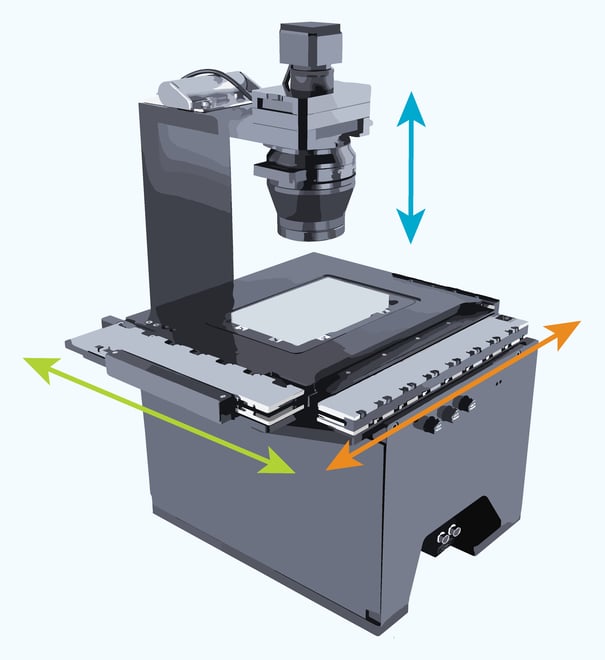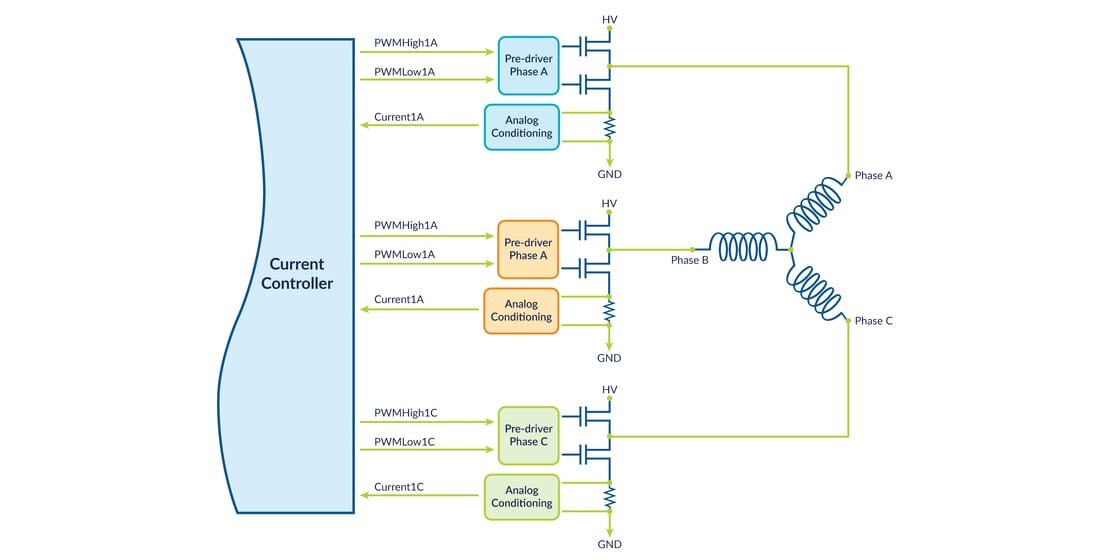Microscope control means motion control of automated microscopes, also called automated digital microscopes or more broadly automated microscopy. Such systems generally contain three dimensions of very precisely controlled motion; an XY table that moves the sample and a Z axis which focuses the lens/sensor element. Automated microscopes are a vital part of a broad array of equipment such as blood analyzers, biological and chemical automated assay machines, semiconductor capital equipment, photonics, and much more.
The hallmark of automated microscopes are their ability to control the position of the sample being viewed very precisely. Positioning accuracies measured in microns or even nanometers are now common. The optical axis (Z axis) typically has similar or somewhat lower positioning accuracy requirements. High end systems use linear direct drive Brushless DC motors for the XY table and Z axis control, although piezo motors are also popular. Step motors can be used for more cost sensitive applications, as can rotary Brushless DC motors with a ball screw mechanical arrangement for the XY table axes.
A key motion technology that has helped drive the performance of automated microscopy is ultra high resolution encoders with digital serial connection schemes such as SSI, BiSS-C, and Endat. These encoders are available with absolute or incremental position feedback. Sin/cos encoders represent another advanced encoder type but with a different signaling approach. Borrowing from traditional quadrature encoders they output precise sinusoidal quadrature-phased waveforms. Special electronics on the motion controller interpolate these signals and expand the resolution by a factor of 1,000 or more.
High performance, low noise current loops coupled with a high speed position servo loop is vital to attain the most accurate positioning results from the XY table. When positioning an ultra-precise stage the tiniest mis-application of current to the motor can cause positioning disturbances. In this exotic nano regime the best engineered systems use an embedded motion controller with a servo loop speed of at least 10 kHz located as close to the motor as possible to minimize noise in the current sensing circuitry.

From a trajectory generation perspective the motion profiles used with automated microscopes don’t tend to be that complicated. Path generation approaches includes point to point XY moves and constant velocity pattern scans with simultaneous image capture by camera. A very useful feature to synchronize stage movement and image capture is hardware-based position capture. This method uses a hardware compare register to trigger an image or sensor capture at the exact moment a particular encoder position is achieved. Depending on the application, systems can specify a single capture at one location or an array of hundreds or even thousands of capture trigger points.
Finally, motion control techniques that can synchronize the position of the XY axis to the commanded position of the optical (Z axis) allow for improved focusing accuracy over the entire XY sample movement area. Such schemes use electronic ‘maps’ of the effective focal height of the XY plane being imaged to pre-compensate the Z axis position command. This technique may be employed to compensate for non-planarity in the XY stage, or of the surface of the material being scanned.
The diagram below shows the control flow for a typical high performance digital switching amplifier with leg current sensing. Such an amplifier architecture, coupled with a digital current and position servo loop, a high precision encoder, and located on an embedded card located close to the motors being controlled, can provide extremely high accuracy positioning.

Since 1994 Performance Motion Devices products have been used in a wide range of automated microscope control applications including biological imaging systems, DNA sequencers, blood analyzers, semiconductor metrology tools, chromatography systems, cell culture equipment, and other automated imaging applications. PMD’s MC58113 motion control ICs are ideally suited for use in embedded microscope controllers as are PMD’s embedded ION Drives and Prodigy Motion Control Boards.
PERFORMANCE MOTION DEVICES, INC.
80 Central Street | Boxborough, MA 01719
P: 978.266.1210 | F: 978.266.1211 | info@pmdcorp.com